 Weird Stuff
Weird Stuff  Weird Stuff
Weird Stuff  Mysteries
Mysteries 10 Tragic Disappearances and Deaths in Joshua Tree National Park
 History
History 10 Ways Childhood Really Sucked in the Old West
 Music
Music 10 Name Origins of Famous Bands from the 1990s
 Religion
Religion 10 Biggest Turnarounds by the Catholic Church
 Weird Stuff
Weird Stuff 10 Unbelievable Times Laws Had Unintended Consequences
 Humans
Humans Ten Historic Women Who Deserve Way More Credit Than They Got
 Movies and TV
Movies and TV 10 Films That Spawned Major Lawsuits
 History
History Ten Times Towns Were Wiped Off the Face of the Earth
 Creepy
Creepy 10 of the Most Disturbingly Haunted Public Houses in the UK
 Weird Stuff
Weird Stuff 10 Niche Subcultures That Are More Popular Than You Might Think
 Mysteries
Mysteries 10 Tragic Disappearances and Deaths in Joshua Tree National Park
 History
History 10 Ways Childhood Really Sucked in the Old West
Who's Behind Listverse?

Jamie Frater
Head Editor
Jamie founded Listverse due to an insatiable desire to share fascinating, obscure, and bizarre facts. He has been a guest speaker on numerous national radio and television stations and is a five time published author.
More About Us Music
Music 10 Name Origins of Famous Bands from the 1990s
 Religion
Religion 10 Biggest Turnarounds by the Catholic Church
 Weird Stuff
Weird Stuff 10 Unbelievable Times Laws Had Unintended Consequences
 Humans
Humans Ten Historic Women Who Deserve Way More Credit Than They Got
 Movies and TV
Movies and TV 10 Films That Spawned Major Lawsuits
 History
History Ten Times Towns Were Wiped Off the Face of the Earth
 Creepy
Creepy 10 of the Most Disturbingly Haunted Public Houses in the UK
10 Historical Cases Of Forced Tattooing
People have been getting tattoos for all of recorded history. We usually think of tattoos as an expression of culture and identity, but they’re not always used this way. History is full of forced tattooing, often to punish people or to mark them as property. Below are some of the more unsavory stories of people being inked without their consent.
10 Ancient Greece
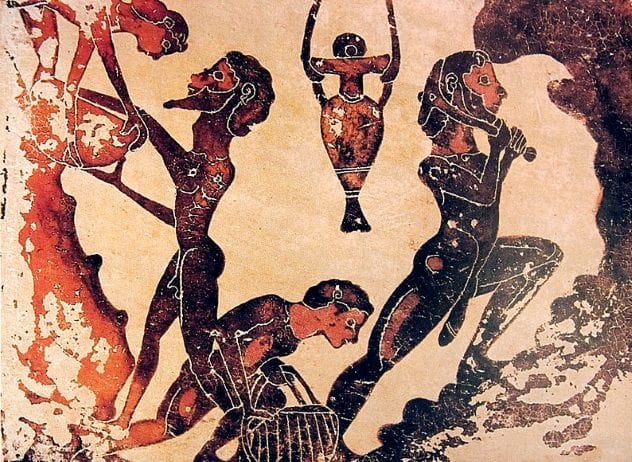
Slaves who misbehaved in ancient Greece were often tattooed with the name of their crime. This was used instead of branding because a more wordy crime like “theft and aggravated assault” would take long time to brand and could put the victim’s life at risk. As slaves were only valuable to their owners alive, tattooing provided a happy (if still upsetting) medium. Similar tattoos were given to free citizens found guilty of crimes.
When the island of Samos was at war with Athens, each side tattooed its prisoners of war to mark them as conquered. Athenians marked Samian prisoners with owls, a symbol of the city’s patron goddess Athena. Samians retaliated by marking their Athenian prisoners with a samaina, a kind of Samian ship. The forehead was an especially dehumanizing place to tattoo a captive because of the increased pain and the fact that it was hard to cover up. (Sweatbands weren’t too common back in the day.)
9 Byzantine Empire
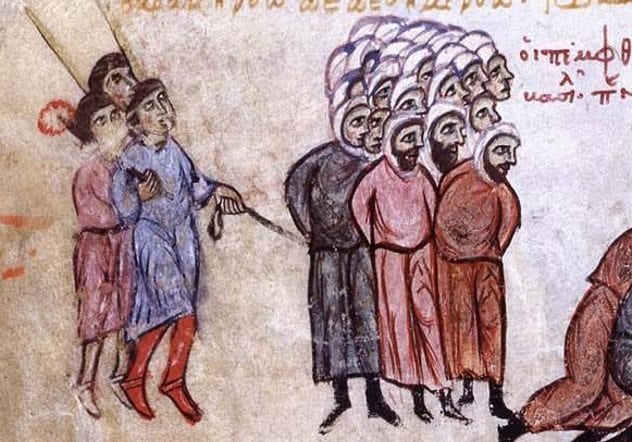
In AD 793, the Armeniac province revolted against the Byzantine Empire. The rebels were defeated by Emperor Constantine VI, who killed their leaders and punished the survivors with fines and confiscations. To add ink to injury, he had at least 1,000 of them tattooed with the phrase “Armeniakon traitor.”
A few decades later, another emperor punished two monks charged with idolatry by tattooing them with 12 lines of iambic verse. The subject of this painful poem? The story of their crime and its punishment. Just like the Greeks, both emperors had these punishing marks inked into their subjects’ foreheads for maximum awkwardness at family gatherings.
8 China

An important rule of Confucianism is avoiding damage to the body, as it is a gift received from one’s parents. Permanently marking the skin is shameful not just to an individual but to their whole family. This made tattooing a serious punishment in historical China.
Penal codes from the Song and Yuan dynasties list the crimes that could result in tattooing. If someone committed a crime punishable by banishment, they were given a square shape behind the ear. If flogging was in order, the shape was round. When a criminal had already been flogged three times, the tattoo was put on the face.
The Chinese were no strangers to the old “spell out the crime” gimmick, either. Cheating couples caught more than once were facially tattooed with the phrase “committed licentious acts two times” before being exiled. That might seem like a lot to fit on a face until you remember that each word was just one character. Either way, it wasn’t fun.
7 Japan
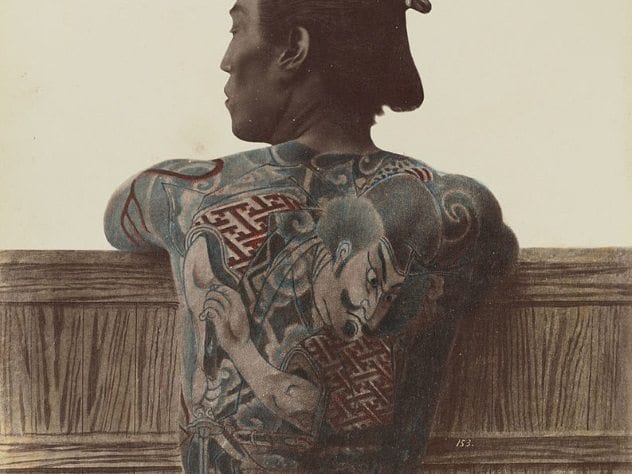
Like the Chinese, the Japanese have historically placed value on keeping the body unmarked for the sake of family and honor. In early modern Japan, tattooing was reserved for the most serious crimes, as being tattooed meant you were permanently ostracized from your family and community. Designs included bars, crosses, circles, and in one region, the pictograph for “dog.” Criminals were commonly marked on (you guessed it) the forehead.
However, in the case of Japan, the tattooed misfits had the last laugh. The end of the 17th century saw the rise of decorative tattooing in Japan, and many criminals covered their penal tattoos with colorful designs. Tattooing is still often associated with criminals in Japan thanks to the Yakuza, who wear full-body ink as a mark of pride and honor.
6 Australian Convicts
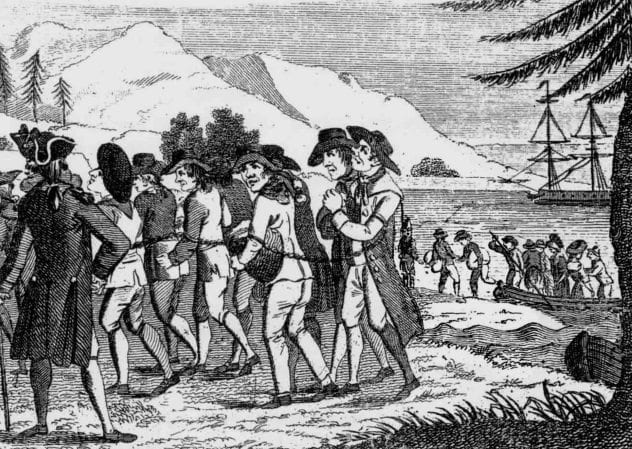
During the 19th century, the British government tattooed and branded inmates to enforce the idea that the state was “all-knowing” and had total control over them. Many inmates sent to the Australian penal colony showed up already marked as criminals. However, some of them flipped this around by accessorizing their tattoos. One man named Aaron Page turned the “D” on his chest (marking him as a deserter) into a Union Jack. This was clever because it concealed a symbol of treason with one of patriotism.
British authorities in Australia soon grew wise to this practice and ordered that convicts never be tattooed at night, as that gave them free time to pick at the fresh scab and change the tattoo.
5 Olive Oatman
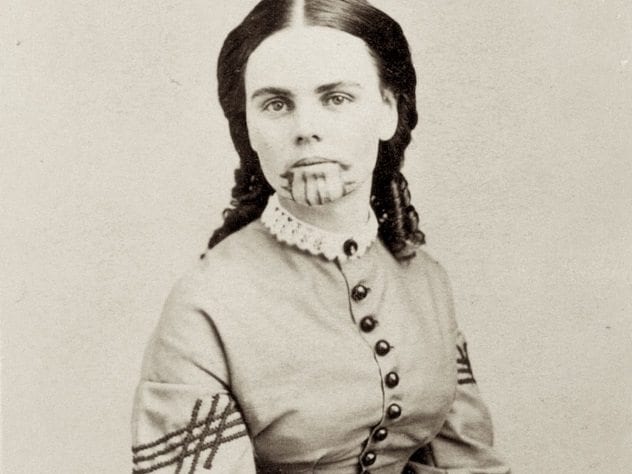
In 1856, a white woman was found living with a group of Mohave near Fort Yuma, California. Her name was Olive Oatman, and most of her family had been killed by the Yavapai tribe while heading west to find a new home. She was taken captive and sold to the Mohave, with whom she lived for four years. During this time, she was given several blue lines on her chin. When she returned to white society, Oatman publicly lectured about her captivity across the country. During her lectures, she claimed that her tattoos were “slave marks” given by the Mohave to their captives.
Long after Oatman’s death, historians concluded that her tattoos were actually the same style given to all Mohave women. They were a mark of belonging, not captivity. Whether or not Oatman’s tattoos were consensual, it’s easy to see why she would claim they weren’t. US society in the 1800s would much rather believe that a white woman was held captive by a native tribe than that she became one of them.
4 John Rutherford
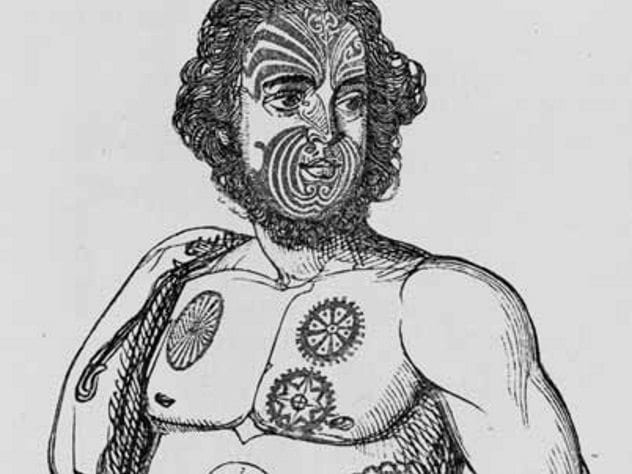
John Rutherford was a performer who toured Britain in the 1800s, showing off a large collection of tattoos on his face and body. While people would admire the tattoos, he would regale them with his story of being shipwrecked in New Zealand and taken captive by the indigenous Maori people. He told of how they ate his shipmates and forcibly tattooed him with chisels and sharks’ teeth.
Most historians agree that this story is even more full of baloney than Olive Oatman’s. Rutherford was likely a deserter who jumped ship, and most of his tattoos were Tahitian, not Maori. If he had actually gotten all of those tattoos at once, he probably would have died of blood loss.
This story makes the list not because it’s true but because stories like Rutherford’s were very common. Performers made whole careers of telling how they had been taken hostage and tattooed by savage tribes. Forced-tattoo stories were a staple of freak shows well into the 20th century, and anyone who’s still reading this list can understand why they were so popular.
3 Soviet Prisoners
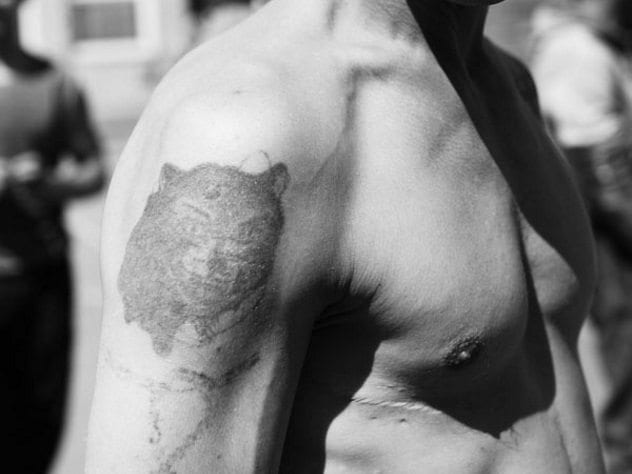
Tattooing was so popular among Russian criminals during the Soviet era that there is a book called the Russian Criminal Tattoo Encyclopedia. Prisoners in Siberian gulags would tattoo each other to show their defiance of authority and membership in elite thieves’ societies. They also forcibly tattooed those who had wronged them.
Common forced tattoos included the phrases “enemy of the people” and “I am a b—h.” A forced tattoo meant that a prisoner had been expelled from a thieves’ society and was nepriskasaemye, or “untouchable.” Anyone who did business with him would become infected from his dishonor. Given the unsanitary conditions in the gulags, they might get infected from his tattoo as well.
2 Auschwitz
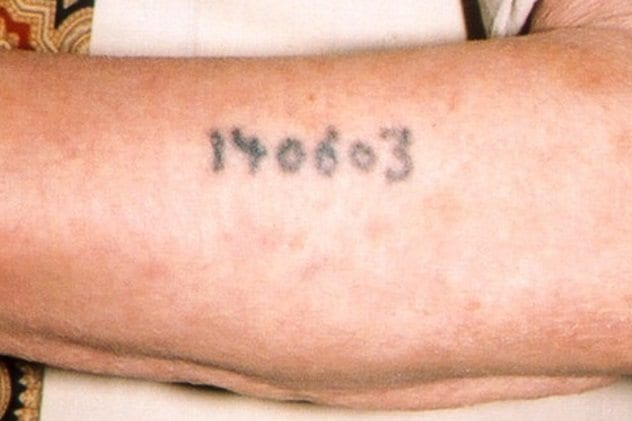
The most infamous story of involuntary tattooing comes from the Holocaust. At the Auschwitz concentration camp, prisoners selected for work were tattooed with serial numbers. These numbers could be used to identify them in case of death or escape. The first group to get tattooed were Soviet prisoners of war brought to the camp in 1941. A serial number was punched into the chest of each victim with a metal stamp, and ink was rubbed into the wound. These tattoos faded quickly, so Nazi officials switched to more conventional needles and began tattooing on the arm.
By 1943, most prisoners at Auschwitz were being tattooed with serial numbers. Jewish prisoners’ tattoos often included a triangle, and those given to Roma contained a “Z” for “Ziguener,” the German word for “gypsy.” The total number of serial numbers assigned to prisoners is estimated at 400,000. Many believe that tattooing is forbidden by Jewish law or that you can’t be buried in a Jewish cemetery if you have a tattoo. This is debated by scholars, and it is thought that some of Jewish opposition to tattooing comes from the trauma of the concentration camps.
1 Punjab Police

As much as we’d like to believe involuntary tattooing is a thing of the past, it has happened more recently than you’d think. In 1993, four women were detained by the Punjab Police in Amritsar, India. They were accused of involvement with a bootlegging operation that had attacked police during a raid. During the week they were in custody, policemen tattooed each woman on the forehead with the words jeb katri, meaning “pickpocket.”
Unlike most of the stories in this list, this one actually ends with justice for the tattooed. In 1994, the Punjab government arranged plastic surgery to remove the tattoos and paid each woman 50,000 rupees. In 2016, a special Indian court found the officers guilty and sentenced each of them to jail time, terming their crime “inhuman.” Maybe we have made progress after all.
Anthropology student by day, list nerd by night. Interested in history, language, nature, and other vague topics.








